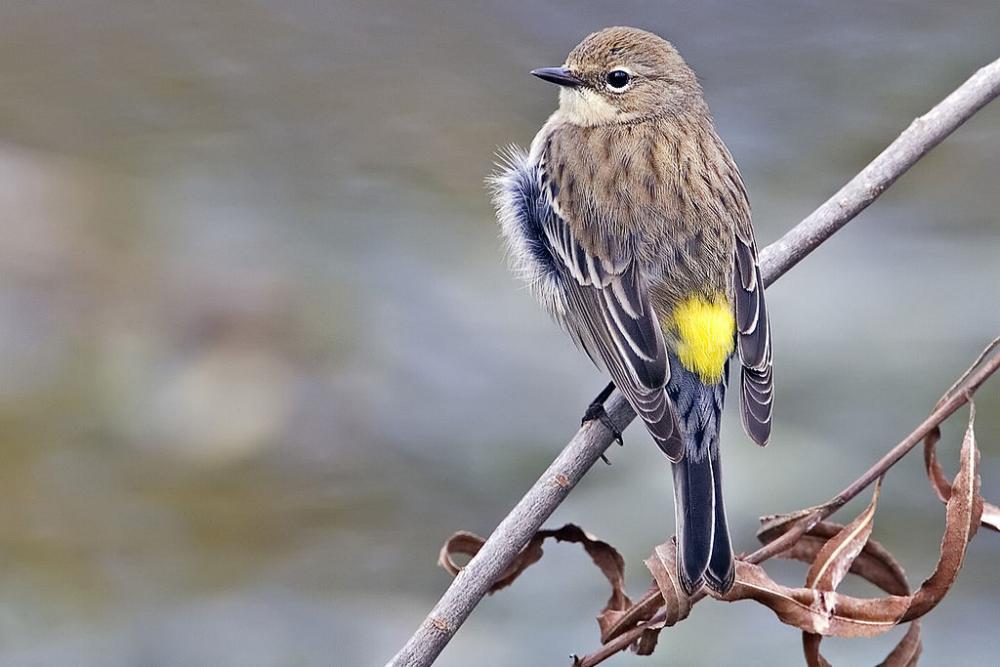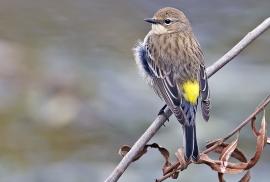Guide to Boreal Birds
Overview
Until recently, the eastern and western populations of the Yellow-rumped Warbler were thought to be two distinct species, respectively the "Myrtle Warbler" and "Audubon's Warbler." However, it has been found that in the narrow zone where the ranges of the two come together, the birds hybridize freely. In the East, the "Myrtle Warbler" is an abundant migrant, and the only warbler that regularly spends the winter in the northern states. Yellow-rumped Warblers are vivid and conspicuous birds that search for food both high and low in Douglas firs or pines. They most often sing from the high canopy of trees. During winter they disperse in loose flocks, and usually two or three birds at most are observed at a time. The birds constantly chirp a "contact call" that keeps the flock together.
The Yellow-rumped Warbler is one of the most common warblers in boreal forest. Among warblers, this species is also one of the most ecologically generalized. Although it is confined largely to mature coniferous breeding habitat, individuals forage in a broad range of microhabitats and employ a variety of foraging techniques, from fly-catching to foliage-gleaning for insects. Western populations may winter near breeding grounds, primarily near Pacific Coast. One of the last warblers to migrate in fall and one of the first to return in spring, remaining in northernmost breeding areas into October, and returning by late April. While Yellow-rumped Warbler reaches its highest densities in mature, unlogged coniferous forest habitat, it can do well in selectively logged forests where some mature trees are left standing.
Description
5-6" (13-15 cm). Breeding male dull bluish above, streaked with black; breast and flanks blackish. Rump, crown, and small area at sides of breast yellow. Western male ("Audubon's Warbler") has yellow throat, large white patch in folded wing. Eastern male ("Myrtle Warbler") has white throat, 2 white wing bars. Females, fall males, and young are streaked gray-brown but always have yellow rump and white spots in tail.
Voice
A colorless buzzy warble; a sharp chek!
Nesting
4 or 5 white eggs, spotted and blotched with brown, in a bulky nest of twigs, rootlets, and grass, lined with hair and feathers and placed in a conifer.
Habitat
Coniferous and mixed forests; widespread during migration and in winter.
Range/Migration
Breeds from northern Alaska, northern Manitoba, central Quebec, and Newfoundland south in West to northern Mexico and in East to Michigan, northern New York, Massachusetts, and Maine. Winters from southern part of breeding range southward into tropics.



